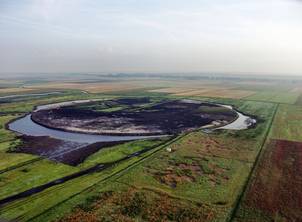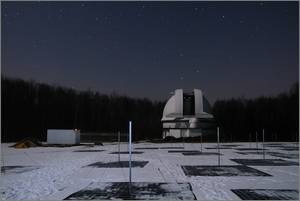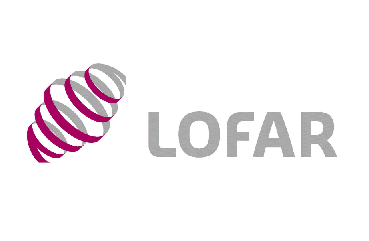Excellence Cluster Universe joins GLOW
01.07.2009 —
The Excellence Cluster „Origin and Structure of the Universe“ of the Technische Universität München is joining the German consortium for the LOFAR telescope. At this year’s meeting of GLOW (German Long Wavelength Consortium) on 3 July 2009, the Excellence Cluster Universe will sign up for membership to the German LOFAR group. Henceforth scientists of the Cluster will thus be able to include LOFAR observations in their research. It is anticipated that the telescope will deliver the first scientific results by the end of 2010 when all individual European installations are in operation.
One of the central research questions of the Excellence Clusters Universe is concerned with the development of galaxies and black holes over billions of years. The radio telescope LOFAR (Low Frequency ARray for Radio Astronomy) is one of the instruments that astronomists use in order to answer this question. Scientists are venturing into unknown frontiers as LOFAR operates in the frequency range between 30 and 250 MHz, which up to now has remained virtually unexplored. The radio telescope array will provide totally new radio pictures.
Picture 1: Aerial photo of the central LOFAR station in Exloo/Netherlands (photo: Astron)
The German LOFAR Consortium (GLOW) has existed since 2006. The members of this association are the astronomical institutes of the universities of Bochum, Bonn and Cologne, Max-Planck Institute for Radio Astronomy in Bonn, Max-Planck Institute for Astrophysics in Garching, Jacobs University Bremen, Sternwarte Hamburg, Research Center Jülich, Astrophysical Institute Potsdam, Thuringer Landessternwarte Tautenburg and the latest member the Excellence Cluster Universe of TU München.
„With our affiliation to GLOW we get the opportunity to examine a part of the universe which up to now have been completely unexplored,“ explains the astrophysicist Dr. Andrea Merloni. He is a researcher at the Excellence Cluster Universe and initiator of the GLOW membership. It is important to Merloni to be part of a network of international specialists. „We now have access to data which we wouldn’t have had access to without GLOW.“
The LOFAR project was started in 2005 with financial support of the government of the Netherlands from the astronomical institute ASTRON in Dwingeloo. The low frequency area of the LOFAR telescope makes it possible to detect cosmic magnetic fields in the Milky Way, in galaxies, galactic and stellar jets as well as in black holes and planets in other solar systems. The institutions participating in LOFAR thus hope to be able to answer the question as to the origin of the galaxies and black holes. After completion of the test phase, the first results are expected by the end of 2010 when all the planned European antenna fields have gone into operation. „No-one can predict the results; it will be exciting,” Merloni explains.
Picture 2: Nightly view of the Tautenberg station (photo: Thüringer Landessternwarte Tautenberg)
The core station of the antenna fields is located in Exloo, Westfriesland. 54 additional stations are arranged in a spiral pattern throughout the Netherlands. In order to achieve an angle resolution with LOFAR of more than one arcsecond, LOFAR stations are also being constructed in Germany, Great Britain, France, Italy and Sweden. At the moment there are four stations in Germany participating in the test: in Effelsberg, Tautenburg, Potsdam, and in Unterweilenbach in Upper Bavaria. The last-mentioned antenna field is run by the Max-Planck Institute for Astrophysics, a partner organisation of the Excellence Cluster Universe. When all stations are online, LOFAR will be the largest telescope array in the world networked via data lines.
What characterizes the LOFAR telescope in addition to its scientific possibilities is its technical properties and condition: It is the first digital radio telescope that does not require any moveable parts and motors. LOFAR comprises a large number of antennas, which are mounted securely on the ground and are arranged in relatively small antenna fields. This allows cost-efficient construction and operation of the stations. The astronomical radio waves are recorded digitally and the signal is transmitted to a high-performance computer at the University of Groningen via a wide-band data line. A super computer processes all the data received there to pictures.
„We are very pleased that we now actively support European radio astronomy through our GLOW membership and are waiting in anticipation of the first results,“ adds Dr. Andreas Müller, scientific manager of the Cluster.








